Surprised is not adequate adulation for a worthy boot review, but it is my first reaction to the Fischer Carbon Pro Travers. My first few days in these kicks were on smooth, perfect to slushy corn. Heading uphill, I thought, well, they walk like a boss, but I don’t think that’ll make up for how they’re gonna ski. And I was surprised. My face was like when you make your kid eat something they don’t want to try, and they’re like, “I’ll be damned, that’s pretty good!
But we’d better go deeper.
Let’s take it from the first step. Getting the boots on: I have high arches and insteps. This makes getting boots on a challenge in the best of circumstances. So when I say putting the Travers’ on is easy, I’m thinking that’s pretty meaningful.
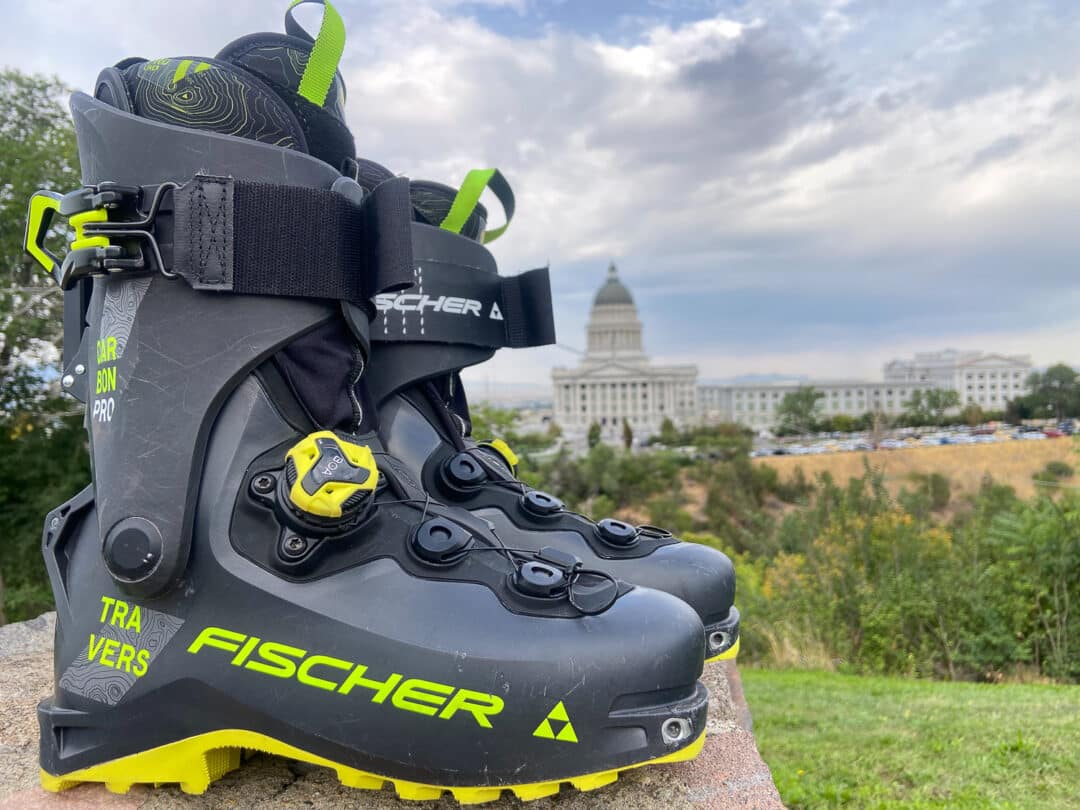
The Fit
Fit and adjustment: My forefoot is relatively wide, and the toe box on the Travers is quite snug. It is comfortable enough, but without any molding or punching out the liner, it’s tight up front, given that, for me, the heel has some play. Interestingly, tightening the boa makes the toes feel, if anything, better, and certainly not worse or uncomfortably tighter; however, it does nothing for my heel. The top of my foot feels quite locked in. Using something like the Eezee-fit ankle bootie helps take up that heel space; however, this can lead to more pressure on the Achilles. So, as always, how the boot fits you is more important than 10,000 reviews. Or one glowing review.
I can tighten the cuff to downhill tightness, which for me means basically taking up all the Velcro strap, and leaving the buckle undone for uphill mode. This leaves the cuff tight and secure, yet not too tight to walk in. Quite miraculous. The BOA, on the other hand, depending on the snow or my feet on the day, sometimes needs some loosening for the uphill. I haven’t had to fiddle with it much and not every tour (for some reason), but sometimes it feels too snug going up if I leave the BOA dialed up as tight as I like it going down. I think that’s where the BOA excels: fine-tuning the fit. For someone (me, namely) with high insteps and arches, the boot is a good fit vertically, but a little too wide in the heel. I’d conclude that the fit is oriented toward the average rather than, say, an especially narrow or wide foot, and probably some boot work could make them fit a pretty broad range of feet.
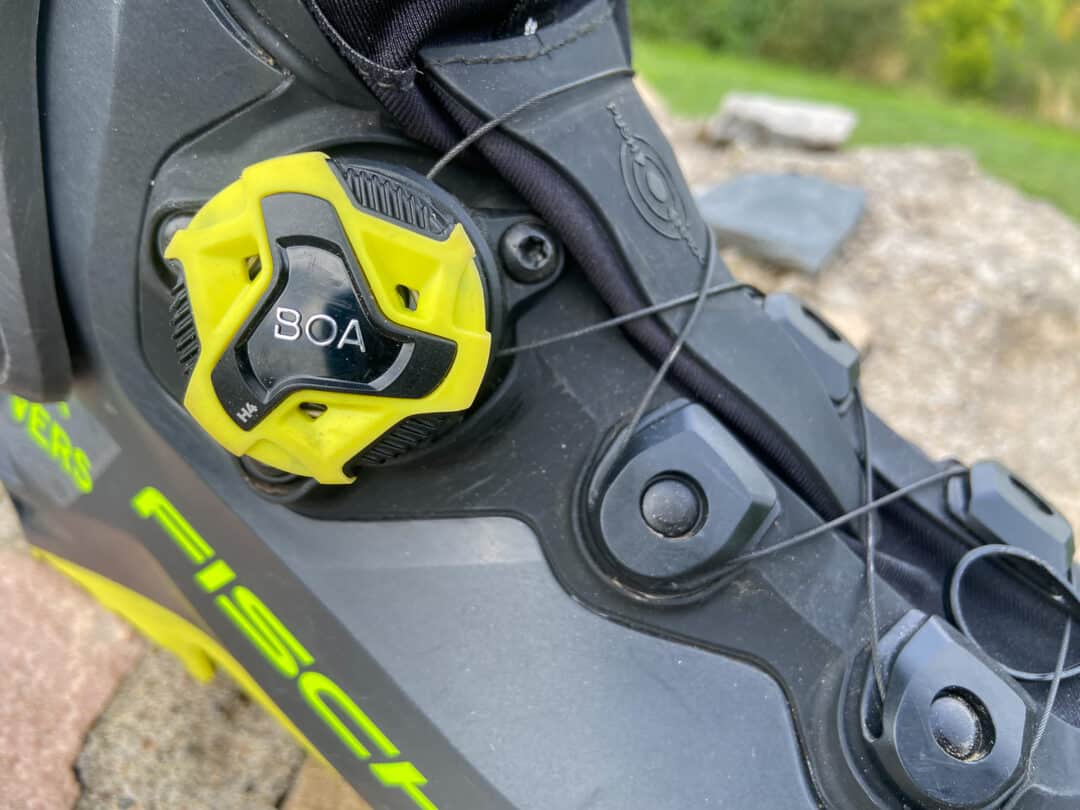
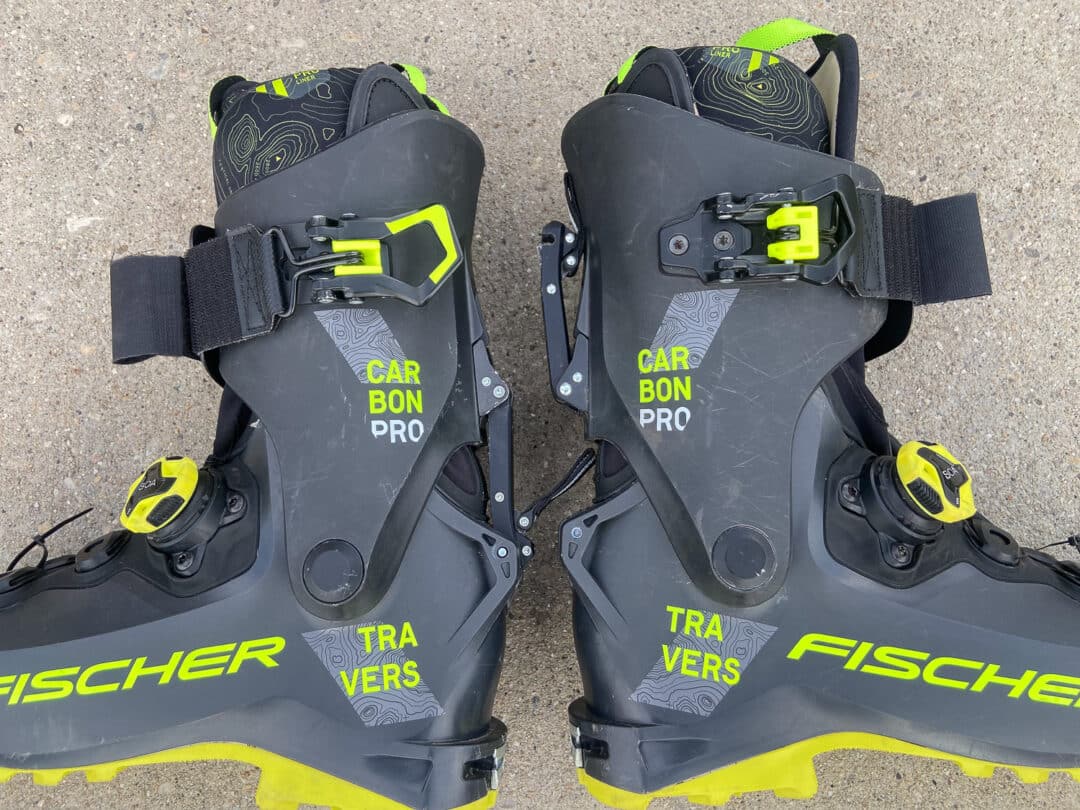
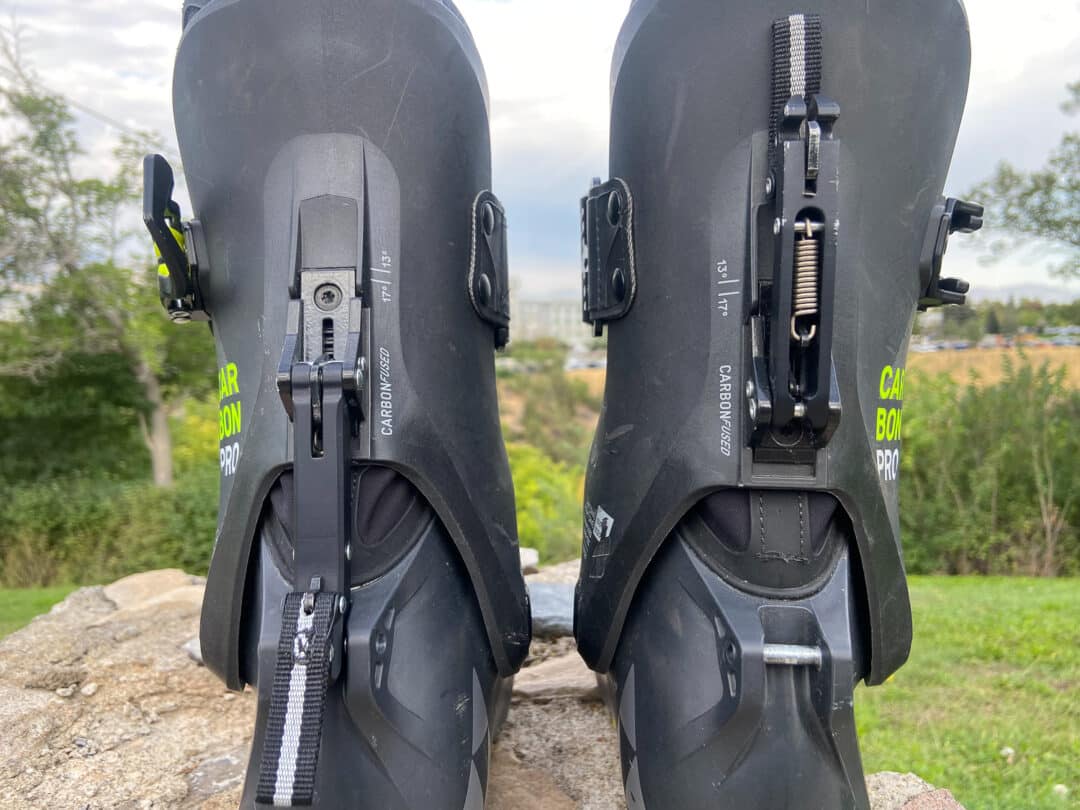
Now the boot is on. Let’s ski: uphilling is quite delightful in these boots. The ROM both forward and backward is more than enough for any skinning or hiking I do. I could probably do yoga in them. But man. I have some dignity. They are very low-friction. They are comfortable to boot pack in, nice even to hike on dry ground in, very secure for scampering about on rocks, and skinning in them is great. Their weight on my scale (standard liner) is 1090g for the 26.5. For comparison, the Zero G Tour Pro weighs 1279g for the 25.5.
The Travers has an interesting offset toe-welt that is supposed to put your foot more naturally in line with the ski. Funny that I’ve never noticed my feet not in line with the ski, and while that makes perfect sense when I’m looking down at the boot in the binding, I don’t really notice it skinning or skiing.
Now we’ve arrived at the top. Transition: Wow. The ease of transition, especially if you can skin up with the velcro powerstrap fit where you want it and the BOA how you like it, is extremely fast and easy. Lever back the sliding buckle velcro strap combo, and you feel the boot wrap your shin and calf. Flip down the ski/walk lever into ski mode, rock forward, and the bar latches securely. Rip skins and off you go. Here’s a note on fit in ski mode. Even with the strap all the way tight, I had to use the included Velcro-on spoiler to take up space in the back of the cuff. It wasn’t noticeable when I was staying forward in the boot, but if I shifted my weight back, there was a backward play between my calf and the boot. It’s an exaggeration, but it felt a little like tipping over backward in a chair. This was instantly solved with the spoiler. And frankly, getting back like that is poor form anyway. Shame on me. Two little ah-hems here. In the transition phase, you need to make sure the tongue has not moved around as you’ve ascended. The tongue can shift over what it should be under, and you may need to wiggle it back in place before buckling up and skiing down. Also, you may have to add some BOA tightening to the transition process. Neither of these things is a major setback, but they’re a thing. Folks used to BOAS likely know that micro-adjusting between ascending and descending is part of the process.
The Skiing. Good? Yes. Surprising, yes. Great? I used 96mm and up to 106mm wide skis. The lightest ski was the DPS CFL 105, and the heaviest was the Fat-ypus M5 FT. The narrowest was the Line Vision 96. In smooth snow, whether it’s powder or corn, the Travers was a good match for the ski. However, as the conditions became either harder or rougher, the ski-boot relationship (which sounds a bit foofy) mattered a lot more. The DPS 105 gets wacked around in rough snow. Paired with the Travers, this translated into a pretty rough ride. I’m a pretty good barometer for ski performance in rough snow because my freaking knee hurts right away if I’m getting banged around. In hard snow, especially as it got steep, the Travers also wasn’t as capable on the wider skis. In hard snow, I could feel my foot wanting to torque in the boot on a hard, steep surface, trying to keep the edge in on the 105 DPS or 106 M5. This was not an issue in softer snow. And this was not the case with the narrower Vision 96. In fact, the narrower ski was a better pairing for the Travers overall, though less important in soft snow. I never had the chance to try them in truly deep snow. Can you hear the sadness in my voice? I hope to remedy that this winter.
I can compare the Travers to both the Zero G Tour Pro and the old Hoji Pro Tour—which, I am aware, is comparing boots designed for skinnier boards to those used by huckers and freeskiers—but not to any other boots strictly in this class. The Zero G is dynamic and precise, with a fit that is completely and comfortably snug from toe to cuff. In the Travers, my foot is not as completely enveloped by the boot. Therefore, it feels less precise, less of a total connection between me and the ski. Again, this was magnified in hard snow on the wider skis, and much less noticeable on the narrower skis or in softer snow. The comparison is probably more appropriate with the old hoji. With the intuition liner I use with the Hoji, the Hoji becomes a pretty heavy boot. The old Hoji features a single buckle and a strap, whereas the Travers has only the top buckle and the BOA, and generally a less rigid shell. Overall, the Travers skis just as well as the Hoji, and it walks more easily and is lighter. The transition is easier and quicker in the Travers, though this is because I couldn’t get the Hoji to work as intended. This is an old and beat-up Hoji, so the comparison is moot as far as buying either one. However, for me, the Travers would replace the Hoji I have. I love the Hoji cramp-in as an ultra-simple and lightweight crampon, so I will miss that. And I am willing to bet that a new model Hoji would be a great boot to test out, as I really liked the old one.
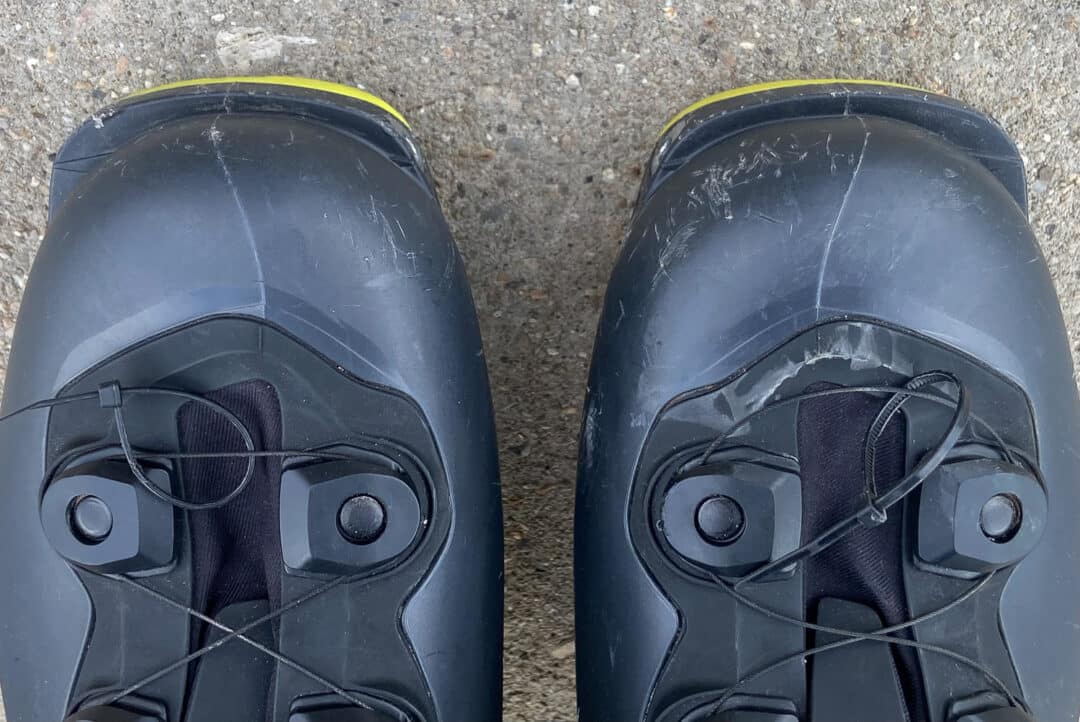
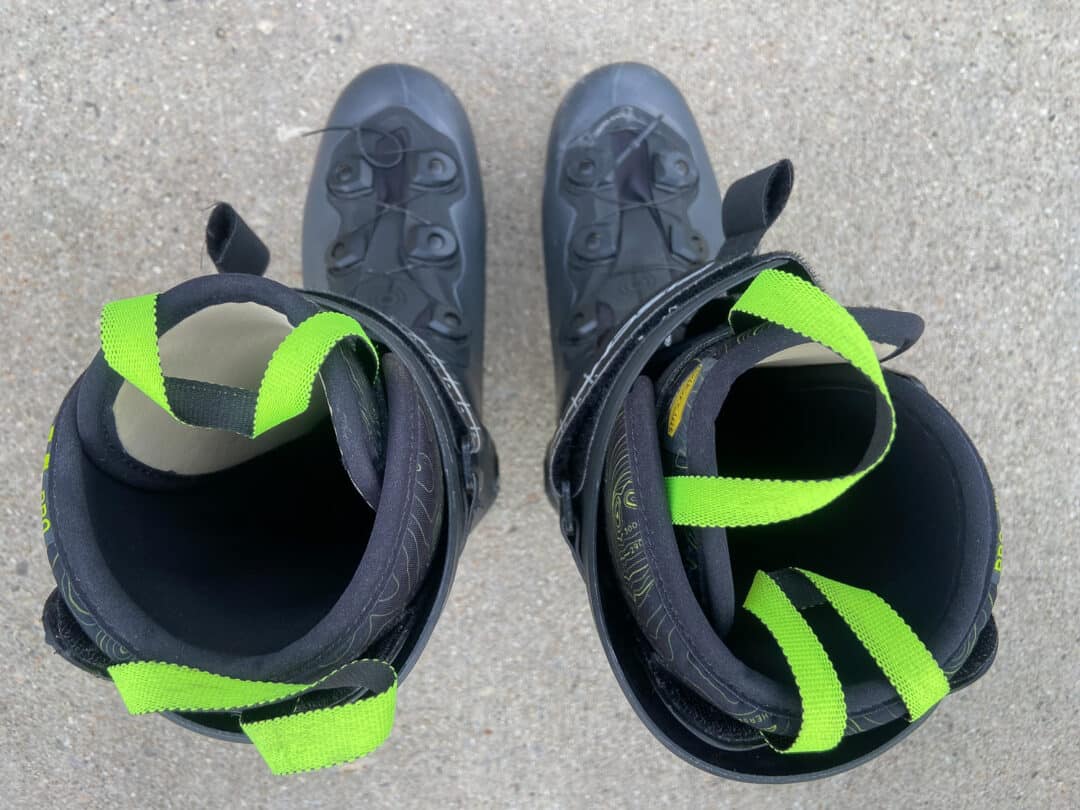
Comparing the flex of the Zero G Tour Pro to the Travers is less telling in the living room, but much easier to feel on snow. For my 165lbs, they’re both stiff enough for the game I bring. The lean into the flex of both is fairly smooth and progressive, and both are smoother than the old Hoji. The Zero G is a bit stiffer, but that stiffness comes on so smoothly that on snow, this translates to a calm, composed sensation. The Travers is also pretty progressive and not quite as stiff, but it transmits more vibration and chatter than the Zero G. The Zero G is smoother and more supple while maintaining rigidity and support. While I must say that the Zero G is a far more confident boot than any touring boot I’ve used, the Travers is surprisingly capable, especially when paired with the right ski. The comparison is really not a fair one. The Zero G is a lightweight four-buckle boot. This is apples to oranges boot-wise, but we are taking both the apples and the oranges skiing—so the comparison isn’t totally invalid. Me—I’m taking the Orange Zero G’s a great majority of the time. And I am not able to compare apples to apples because these are the only 1000ish g boots I’ve used. However, Billy Haas can offer us some valuable insights into this category of boots.
I can’t comment on durability as I have only used them for a month this past spring. But so far so good.
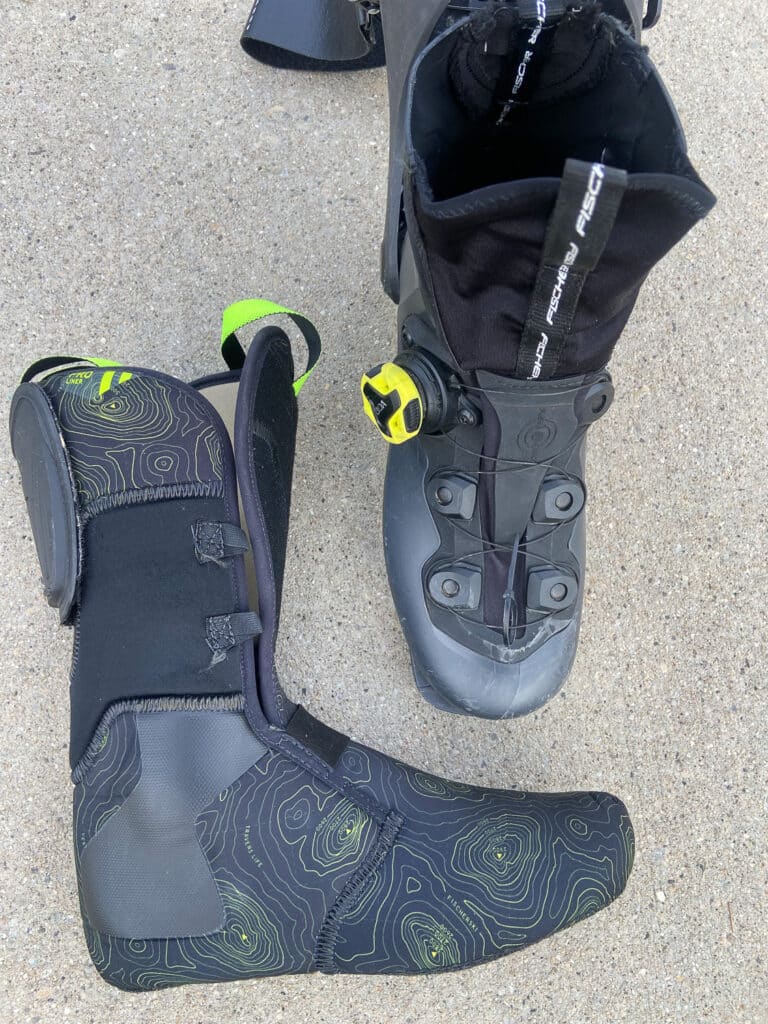
Considering their low weight, range of motion, and descent capabilities, I will conclude by saying that if these boots fit your feet well, then they are absolutely a boot you should consider. I think they are very good for a wide range of touring—long tours in soft and forgiving snow conditions, using any ski you like, or on longer tours on harder and steeper snow, using a narrower ski. I expect this boot to push a widish ski in our “best snow on earth.” But for skimoers looking for a heavier, stiffer boot than you’re regular featherweight slippers, with such kind range of motion and low friction, you’ll likely find the Travers pleasing. Spring tours chasing the freeze-thaw cycle, big honking traverses, or just steep and firm objective skiing, the Travers should be splendid.
This winter, I hope to get them out in the goods. I wish us all luck with that. Let it snow!
Stats
Cuff/Shell: Carbon Infused Pebax
Sole: Vibram Litebase with underlying carbon plate for torsional rigidity
Weight (26.5) shell only: 894g
Weight (26.5) liner + stock insole only: 294g
Weight plastic spoiler: 34g
The whole package (no laces) size 26.5: 1,222g
Forward lean: 13 degrees or 17 degrees with spoiler
ROM: A claimed 80 degrees (consider the ROM as excellent)
Price: $899.00

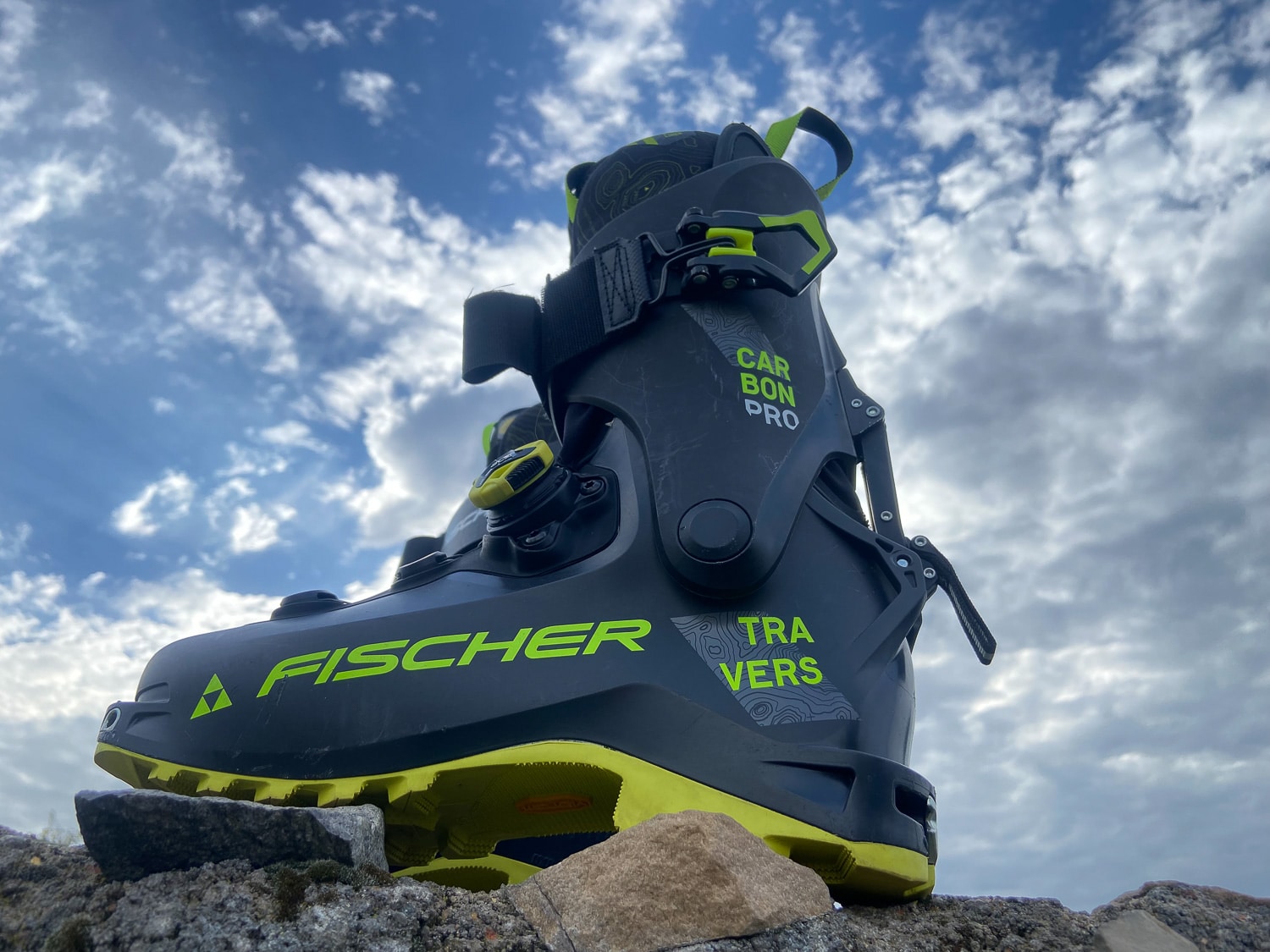
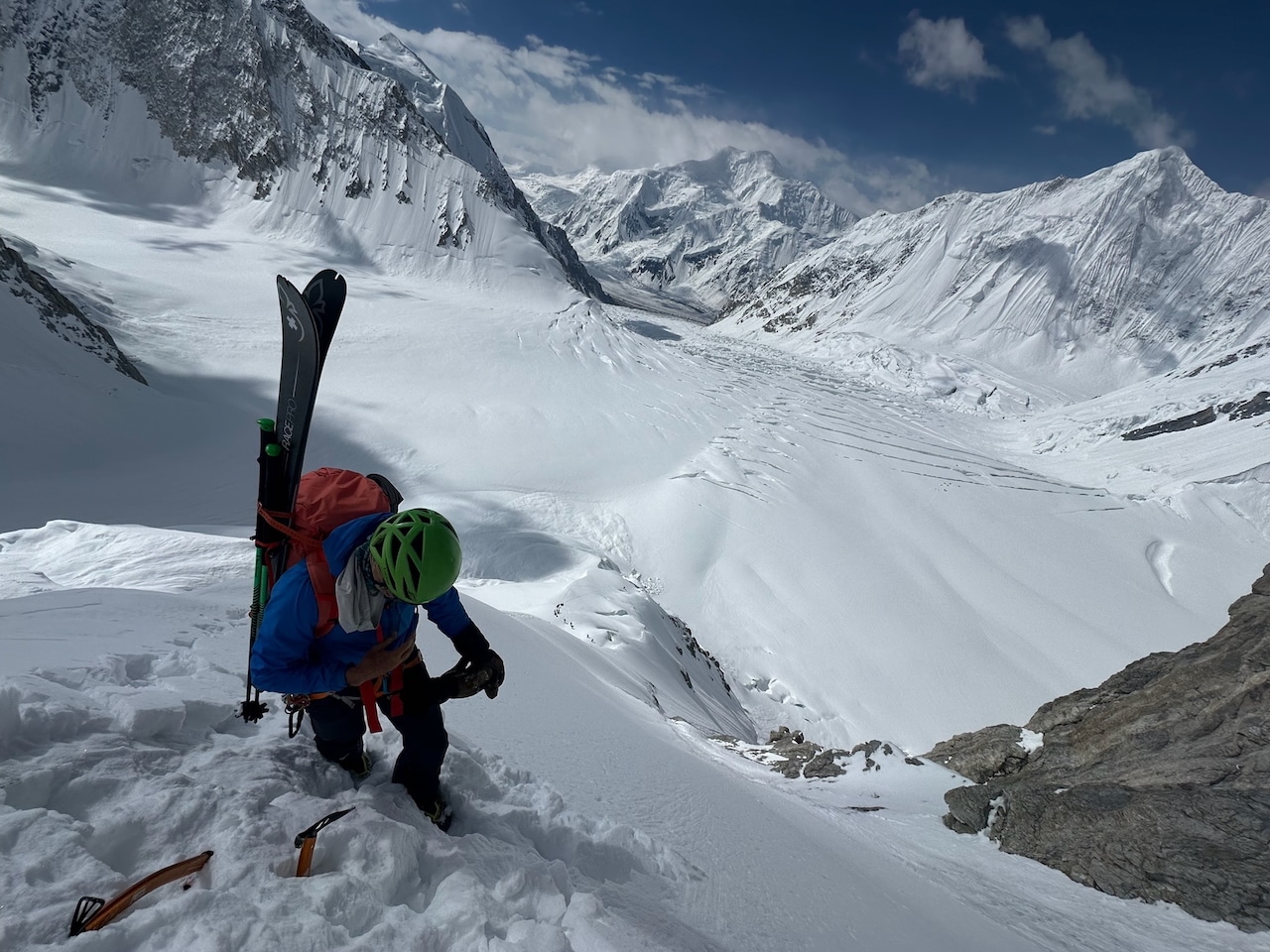
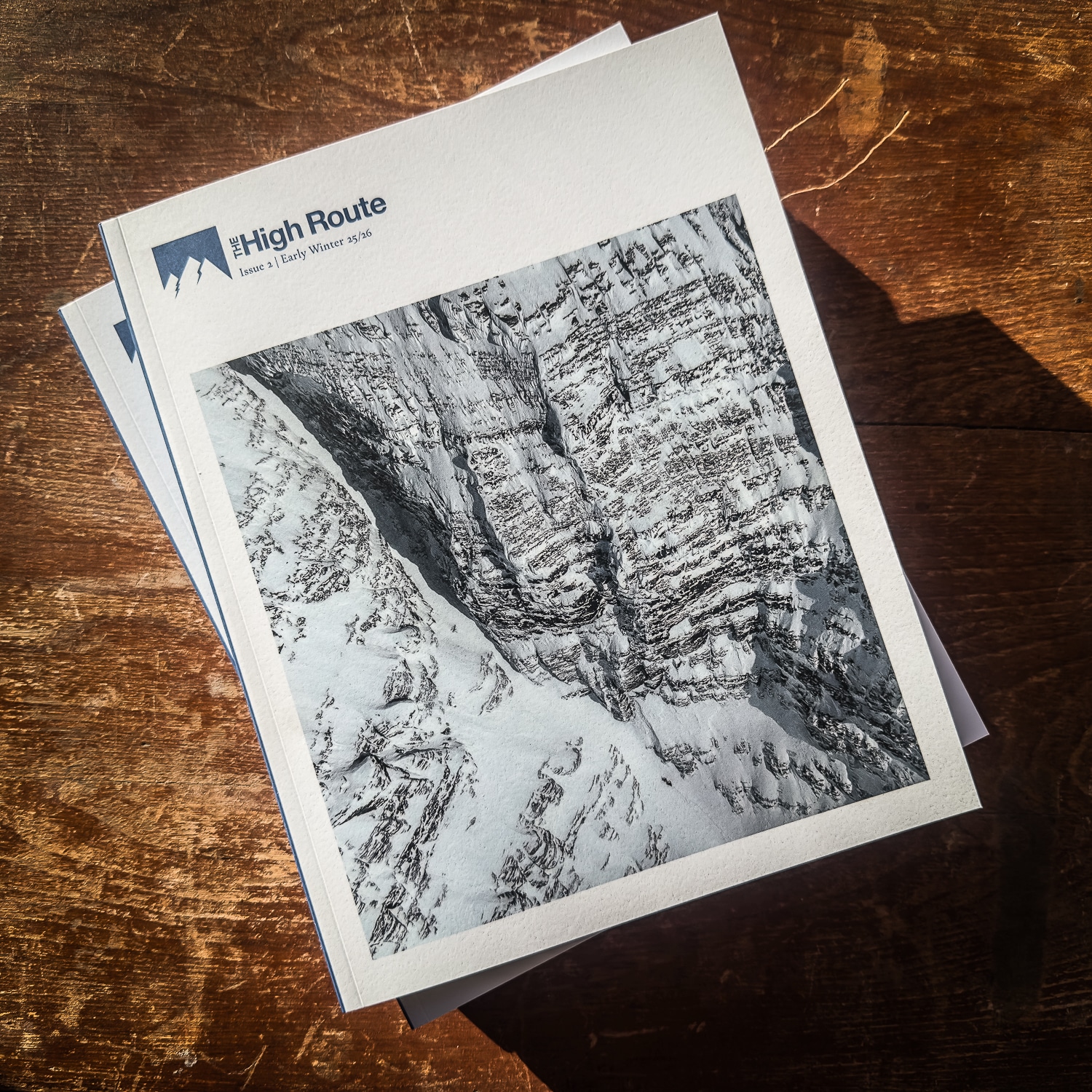
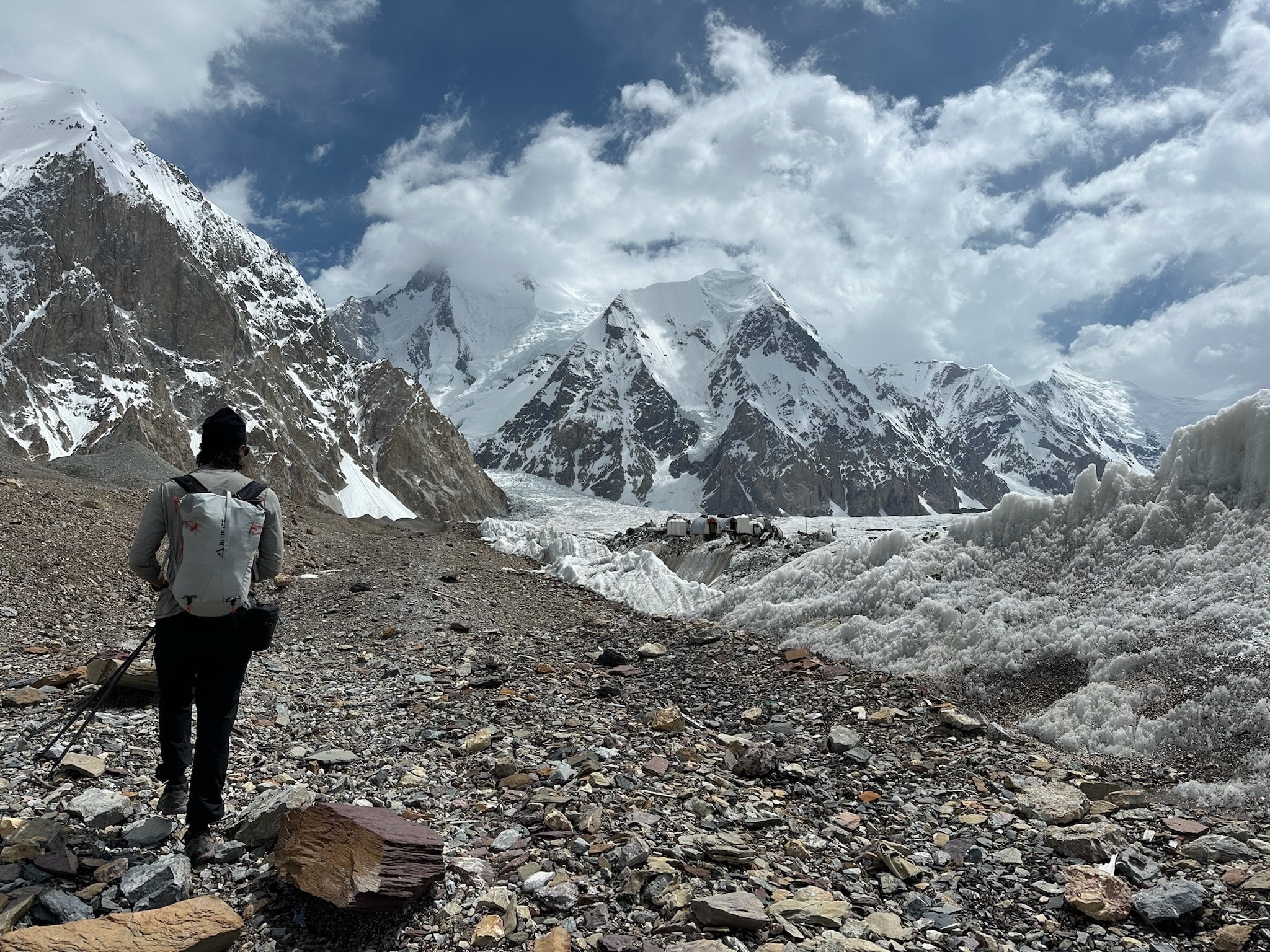
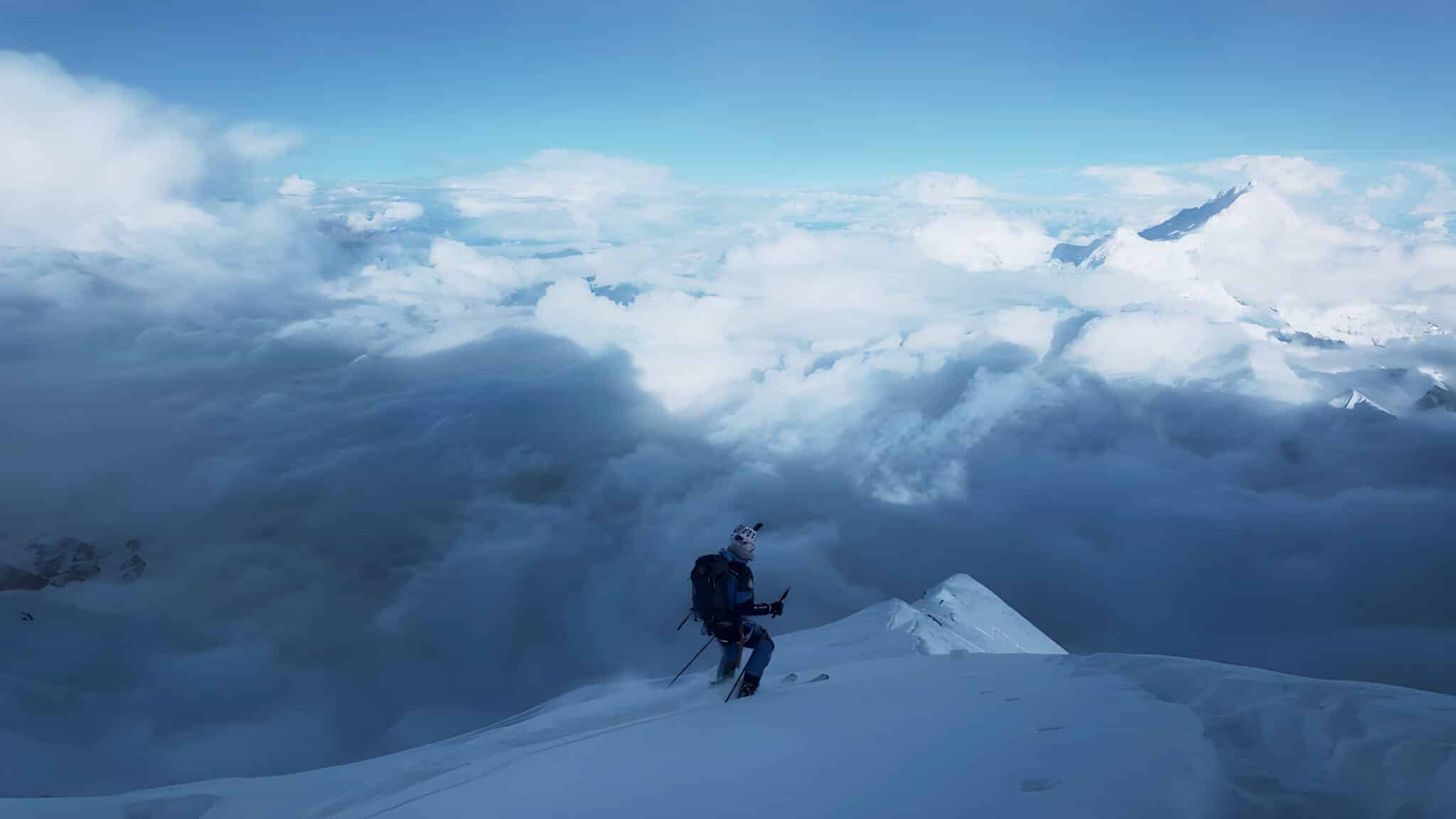
Leave a Reply
You must be logged in to post a comment.